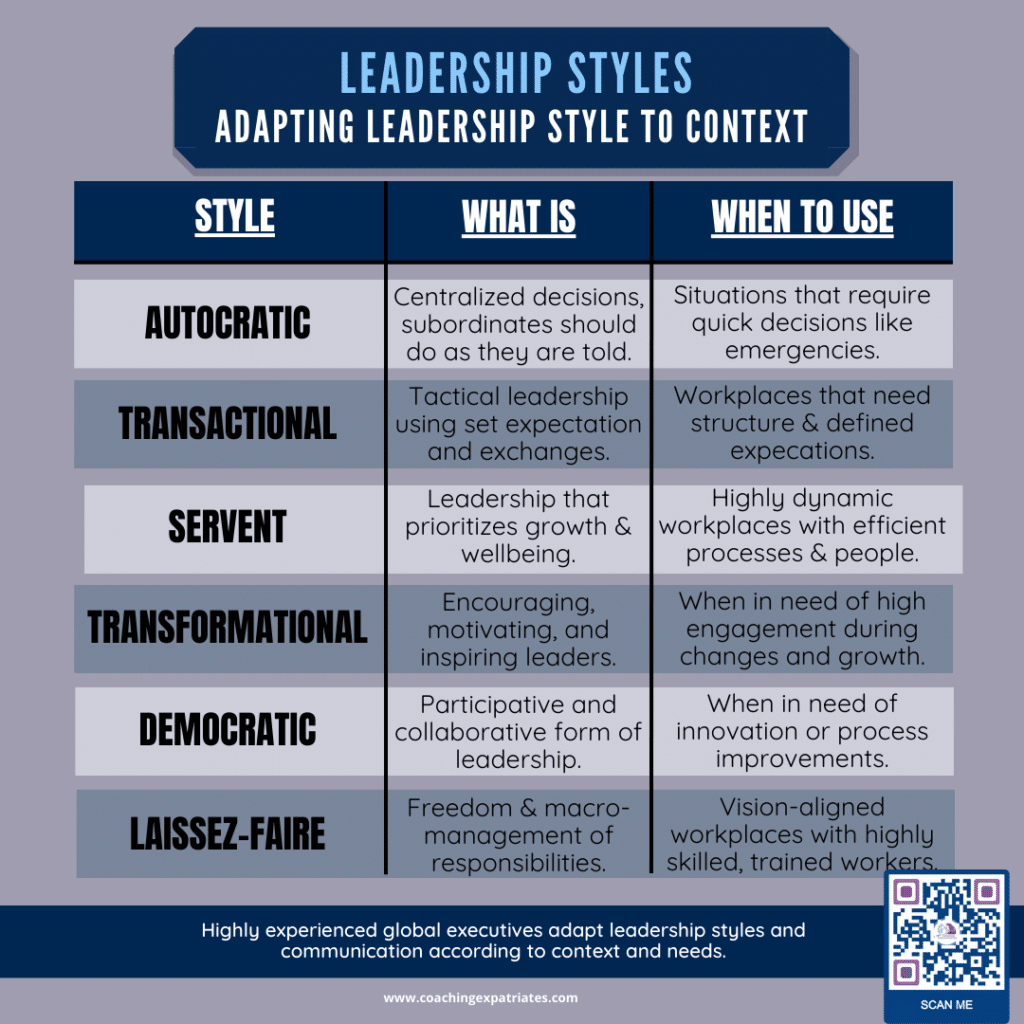In the dynamic realm of leadership, the autocratic style has long been a subject of debate and scrutiny. How does it differ from other leadership styles? Is it always a negative force in the workplace, or are there situations where it can be harnessed for leadership success? Can capable leaders transition from autocratic to a different style? And how do cultures around the world perceive this intriguing leadership approach?
In this comprehensive guide, we will embark on a journey to unravel the autocratic leadership paradox. We’ll start by dissecting what an autocratic leadership style truly entails, shedding light on its characteristics and nuances. Then, we’ll delve into the real-life stories of leaders who have wielded autocracy to shape history. Along the way, we’ll explore how autocratic leadership stands apart from other styles, dissecting its pros and cons, and identifying the ideal scenarios where it can prove indispensable.
But that’s not all—our exploration doesn’t stop there. We’ll investigate the delicate art of balancing autocracy with collaboration, a skill that modern leaders must master. We’ll also chart the path for leaders seeking to transition from an autocratic approach to more democratic or transformational styles, offering practical steps and insights.
But perhaps the most intriguing aspect of our journey will be our exploration of how different cultures view autocratic leadership. The lens through which this leadership style is perceived can vary significantly across low and high-context cultures, shaping the expectations and reactions of teams and organizations worldwide.
Finally, we’ll bring it all together with a captivating case study—a manager’s odyssey as she adapts from an autocratic leadership style to a blend of transformational and democratic leadership. Through her experiences, we’ll uncover what leaders should focus on when navigating this significant shift.
So, fasten your seatbelts as we embark on this enlightening expedition into the realm of autocratic leadership. Whether you’re a seasoned leader, an aspiring one, or simply curious about the intricate world of leadership dynamics, this guide promises to offer valuable insights and practical takeaways for your leadership journey.
What Is An Autocratic Leadership Style?
Autocratic leadership is a style of leadership in which a single individual holds all the decision-making power and authority in a group, organization, or country. In this leadership style, the leader exercises total control over the decision-making process and typically does not seek or consider input or opinions from others.
Autocratic leaders tend to make decisions based on their own beliefs, values, and personal judgments, without consulting or involving others. They often give orders and directives without explanation or discussion, expecting strict obedience and compliance from their subordinates.
Characteristics of autocratic leadership include:
- Centralized authority: The leader holds absolute power and makes all significant decisions.
- Limited participation: Subordinates have little or no involvement in the decision-making process.
- Clear hierarchy: There is a clear distinction between the leader and subordinates, with a top-down chain of command.
- Directive communication: The leader communicates instructions and expectations rather than engaging in open dialogue.
- Lack of feedback: Feedback and input from subordinates are not actively sought or valued.
- Decisiveness and quick action: Autocratic leaders often make decisions swiftly without extensive deliberation.
Real-Life Examples Of Leaders Who Used Autocratic Leadership Style
Here are some examples of more authoritarian leaders in both the political world and the business world:
Political World:
- Kim Jong-un (North Korea): Kim Jong-un is the leader of North Korea and exercises absolute control over the country, making all major decisions without seeking input or consensus from others.
- Vladimir Putin (Russia): Vladimir Putin has been the President of Russia, with periods of influence as both president and prime minister. His leadership style has been criticized for being highly centralized and authoritarian.
- Recep Tayyip Erdogan (Turkey): Recep Tayyip Erdogan has been the President of Turkey since 2014 and has been accused of centralizing power and curbing freedoms during his tenure.
- Xi Jinping (China): Xi Jinping is the General Secretary of the Chinese Communist Party and President of China. His leadership style has been characterized by increased centralization of power and a crackdown on dissent.
Business World:
- Steve Jobs (Apple): Steve Jobs, the late co-founder of Apple Inc., was known for his autocratic leadership style. He was highly involved in decision-making processes and had a reputation for being demanding and strongly influencing product development.
- Larry Ellison (Oracle Corporation): Larry Ellison, the co-founder and former CEO of Oracle Corporation, was known for his assertive and autocratic leadership style. He was heavily involved in the decision-making process and had a strong influence on the company’s direction.
- Rupert Murdoch (News Corporation): Rupert Murdoch, the media mogul and founder of News Corporation (now known as Fox Corporation), was known for his authoritative and centralized leadership style, where he maintained significant control over the company’s operations.
It’s important to note that autocratic leadership styles can vary in intensity and approach. These examples represent individuals who have been associated with autocratic tendencies based on observations and accounts.
How Does Autocratic Leadership Differ From Other Leadership Styles?
There are several leadership styles that have been identified and studied by various researchers. Here are some of the most well-known leadership styles:
1.Transformational Leadership: Transformational leaders inspire and motivate their followers by setting high expectations, providing vision and direction, and fostering personal growth and development. They encourage innovation, creative solutions, collaboration, and a sense of purpose. This leadership style emphasizes the leader’s ability to bring about positive change and transformation within individuals and organizations. The theory of transformational leadership was developed by James V. Downton and popularized by James MacGregor Burns.
2. Transactional Leadership: Transactional leaders focus on maintaining stability and achieving goals through clear expectations, rewards, and punishments. They engage in a transactional relationship with their followers, providing them with specific tasks, monitoring their performance, and rewarding or disciplining them based on results. Transactional leadership emphasizes the exchange of rewards for effort and was introduced by sociologist Max Weber and later expanded upon by Bernard M. Bass.
3. Servant Leadership: Servant leaders prioritize the needs and well-being of their followers above their own. They demonstrate empathy, humility, and a commitment to serving others. They provide support, guidance, and resources to help their followers reach their full potential. The concept of servant leadership was popularized by Robert K. Greenleaf.
4. Autocratic Leadership: Autocratic leaders retain all decision-making authority and closely control their followers. They make decisions independently, often without consulting others, and expect strict compliance and obedience. Autocratic leadership is characterized by a top-down approach, with limited input from subordinates.
5. Democratic Leadership: Democratic leaders involve their followers in decision-making processes and seek their input and feedback. They value collaboration, participation, and consensus-building. Democratic leaders encourage open communication, empower their team members, and consider diverse perspectives before making decisions.
6. Laissez-Faire Leadership: Laissez-faire leaders adopt a hands-off approach and provide minimal guidance or direction to their followers. They delegate faster decision-making authority to their team members & direct reports and allow them to work independently. Laissez-faire leadership can be effective when team members are highly skilled and self-motivated, but it can also lead to a lack of direction and coordination.

These leadership styles have been developed and studied by various researchers and scholars over the years. The theories and concepts associated with these styles have been refined and expanded upon by different individuals in the field of leadership and organizational behavior.
Is Autocratic Leadership Always Negative?
Autocratic leadership has often been portrayed in a negative light due to its inherent characteristics of centralized decision-making, limited employee input, and a top-down approach. However, it’s essential to recognize that autocratic leadership, like any leadership style, is not inherently good or bad. Its impact largely depends on the context in which it is employed and how it is executed.
In situations where swift decisions are crucial, such as during a crisis or emergency, autocratic leadership can be highly effective. A leader’s ability to make quick and decisive choices without extensive deliberation can be a valuable asset. Moreover, autocratic leadership can provide clarity of direction and ensure that the team stays focused on a specific course of action.
However, problems arise when autocratic leadership becomes the default mode of leadership in all situations. Overreliance on this style can stifle creativity, diminish employee morale, and hinder innovation. It may create a work environment where team members feel disempowered and undervalued. Therefore, the key lies in recognizing when autocratic leadership is appropriate and when a more participative, democratic, or transformational approach would yield better results. Ultimately, effective leadership is about adaptability and choosing the right styles of leadership for the right circumstances.

Pros, Cons & The Best Situations To Use A More Authoritarian Leadership Approach
While autocratic leadership can be effective in certain situations that require quick decision-making or maintaining order and discipline, it can also lead to several challenges. These may include a lack of employee motivation and engagement, decreased creativity and innovation, and potential resentment or resistance from subordinates who feel excluded from the decision-making process.
It’s worth noting that there are different variations of leadership styles, and autocratic leadership represents one end of the spectrum. Other styles of leadership, such as democratic or transformational leadership, emphasize collaboration, participation, and empowering others in decision-making processes.
How Can Leaders Balance Autocracy & Collaboration?
Balancing autocracy and collaboration is a critical challenge for leaders aiming to optimize their leadership approach. Achieving this equilibrium is vital for fostering a healthy and productive work environment. Here are some strategies to help leaders strike the right balance:
- Recognize the Context: Understand that not all situations require the same level of autocracy or collaboration. In times of urgency or crisis, quick decisions may be necessary, warranting a more autocratic approach. In contrast, when brainstorming, team-building, or long-term planning is the focus, collaboration becomes essential.
- Clear Communication: Clearly communicate the reasons behind your decisions. When taking an autocratic stance, explain the rationale to your team. This transparency helps team members understand the decision-making process, and fosters trust.
- Delegate Responsibilities: Delegate tasks and responsibilities effectively. Autocratic leaders can still involve team members by entrusting them with specific tasks within the broader framework set by the leader. This empowers employees and promotes collaboration within defined boundaries.
- Encourage Feedback: Create an environment where employees feel comfortable providing feedback and suggestions. Even in autocratic settings, soliciting input from team members can lead to improved decision-making and a sense of inclusion.
- Flexibility: Be flexible in your leadership approach. Recognize that the balance between autocracy and collaboration may need to shift as circumstances change. Adapt your style to suit the needs of the team and the organization.
- Empowerment: Gradually transition towards a more collaborative type of leadership as the team matures and gains experience. Empower employees to take on more decision-making responsibilities, promoting a sense of ownership and commitment.
- Training and Development: Invest in leadership training and development to enhance your leadership skills, including the ability to collaborate effectively. Learning how to facilitate group discussions, manage conflicts, and build consensus can be invaluable.
When I was a CFO in Latin America, I once inherited a legal entity that had broken processes and procedures across the organization but that mostly affected my department, which saw the end of most of these processes. As soon as I arrived, I established in a very autocratic way a monthly “Postmortem session,” consisting of multifunctional team members, to discuss and troubleshoot the processes after each financial close. The catch is that I did not display an autocratic style during the meetings per se, only when demanding everyone’s presence at the meeting. During each meeting, I made use of a blend of transformational and democratic styles to foster brainstorming, problem-solving, and open communication. With time, all multifunctional teams started to see changes in the processes and improvements in overall results, costs, and even workload. In a question of 5 or 6 months, I did not have to use an autocratic style to demand their presence in the meetings anymore, as they saw the value in those meetings and discussions. Actually, they just showed up without me having to use any pressure or any other hard tactics of influencing.
I want to highlight with this story that effective leadership involves finding the right balance between autocracy and collaboration, and this balance may change over time. Leaders who can adapt their approach to suit the needs of their team and the circumstances at hand are more likely to foster a positive and productive work environment. As you saw in the story, this adaptation can be at a task level and moment by moment, depending on need and context. Balancing these elements requires a deep understanding of both the team’s dynamics and the larger organizational goals.
How Can Leaders Transition From Autocratic To A Different Leadership Style?
Transitioning from an autocratic leadership style to a different, more collaborative, or participative style can be a challenging but rewarding journey. Here are steps leaders can take to successfully make this transition:
Self-Reflection: Begin by reflecting on your leadership style and its impact on your team and organization. Understand the reasons behind your autocratic tendencies and assess whether a change is necessary for improved outcomes.
Set Clear Objectives: Define your goals for transitioning to a different leadership style. Consider what you want to achieve, such as improved teamwork, increased employee engagement, or enhanced creativity and innovation.
Seek Feedback: Encourage honest feedback from your team members and peers. Understand how your leadership style is perceived and what specific areas need improvement. This input can be invaluable in guiding your transition.
Identify a Role Model: Find a leader or mentor who exemplifies the leadership style you wish to adopt. Study their behaviors, communication strategies, and decision-making processes. Learn from their experiences and successes.
Alignment of Goals & Expectations: Before fully embracing a different leadership style, ensure that the team’s goals and expectations are well-aligned. Collaborative leadership often involves setting collective goals and creating shared visions. Openly communicate these objectives with your team to build a sense of purpose and unity, making the transition smoother and more effective.
Communication Skills: Develop strong communication skills, especially in areas like active listening, empathy, empowering questions, and openness. Effective communication is at the core of collaborative leadership. I want to highlight here the power of questions. Most autocratic leaders think they have to communicate answers and instructions, when simply asking the right questions can foster outstanding results in terms of innovation, collaboration, and creating solutions.
Delegate Authority: Start delegating more responsibilities to team members. Gradually empower them to make decisions within their areas of expertise. This shift allows team members to take ownership of their work and fosters a collaborative environment.
Collaborative Decision-Making: Involve team members in the decision-making process. Seek their input, ideas, and feedback on important matters as a new decision-making approach. This inclusion not only enhances decision quality but also boosts team morale.
Training and Development: Invest in leadership training and workshops that focus on collaborative and participative leadership styles. These programs can provide valuable insights and tools for your transition.
Practice Patience: Understand that changing your leadership style is a gradual process. Be patient with yourself and your team as you navigate this transition. There may be challenges and setbacks, but persistence is key.
Measure Progress: Continuously assess your progress toward adopting the new leadership style. Use key performance indicators, team feedback, and organizational outcomes to gauge the effectiveness of the transition.
Celebrate Successes: Acknowledge and celebrate achievements along the way. Recognize the positive impact of your evolving leadership style on team dynamics and overall organizational performance.
Transitioning from autocratic to a different leadership style requires self-awareness, dedication, and a genuine commitment to fostering collaboration and empowerment within your team. It’s a transformative journey that can lead to improved teamwork, higher employee satisfaction, and better outcomes for your organization.
How Low And High Context Cultures View The Autocratic Leadership Style?
In the diverse caleidoscope of the global workplace, leaders often find themselves grappling with varying cultural perspectives on leadership styles. One such style that can elicit markedly different reactions is autocratic leadership. The perception of autocratic leadership differs significantly between low and high-context cultures, shedding light on the nuanced preferences and expectations of these societies. Let’s delve into how each of these cultural contexts views autocratic leadership, and what their preferred leadership styles tend to be.
High Context Cultures:
High-context cultures are characterized by intricate webs of unwritten social norms, shared history, and deep interpersonal relationships. In such cultures, communication tends to be implicit, relying heavily on non-verbal cues, context, and the understanding of shared experiences. When it comes to autocratic leadership, high-context cultures often perceive it quite differently from low-context ones.
Reception of Autocratic Leadership: In high-context cultures, autocratic leadership is not always met with the same level of resistance or skepticism as it might be in low-context cultures. This is because high-context societies tend to place a premium on hierarchy and authority. Leaders are often expected to make decisions decisively and take charge of situations without the need for extensive consultation. In such cultures, autocratic leaders are sometimes seen as strong and capable individuals who can navigate complex social dynamics effectively.
Preferred Leadership Style: High-context cultures tend to favor leadership styles that emphasize relationships, consensus-building, and indirect communication. Transformational leadership, which focuses on inspiring and motivating through shared vision, resonates well with these societies. Japan and South Korea serve as prime examples of high-context cultures where hierarchical structures and strong leadership are not just accepted but also appreciated.
HIgh-Context Culture Example Countries: To illustrate these cultural differences:
- Japan is a quintessential high-context culture. Japanese society values harmony, respect for authority, and group cohesion. Autocratic leadership, when exercised judiciously and in alignment with cultural norms, can be well-received in Japanese organizations.
Low Context Cultures:
Contrary to high-context cultures, low-context cultures have more explicit communication styles, relying less on shared context and more on the explicit content of the message. In such societies, autocratic leadership is often viewed through a different lens.
Reception of Autocratic Leadership: In low-context cultures, autocratic leadership can raise eyebrows and generate resistance. These societies tend to value individualism, personal freedom, and open dialogue. Autocratic leaders may be seen as domineering or controlling, which can lead to disengagement and conflict within the organization. People in low-context cultures often expect leaders to involve them in decision-making processes and provide a rationale for their actions.
Preferred Leadership Style: Low-context cultures often gravitate toward democratic or participative leadership styles. These styles encourage collaboration, open communication, and the involvement of team members in decision-making. The United States and many Western European countries exemplify low-context cultures where leadership is expected to be more inclusive and consultative.
Low-Context Culture Example Countries: To illustrate these cultural differences:
- The United States represents a low-context culture, although not considered to be on the lowest side of this spectrum, like Denmark or Germany. Americans tend to value individualism, freedom of expression, and democratic decision-making. Autocratic leadership in the U.S. workplace can encounter resistance and may be less effective in the long run.
Read our full High and Low Context Cultures guide if you want to learn more about this fascinating topic. But to sum up what we just covered, understanding how autocratic leadership is perceived in high and low-context cultures is vital for effective leadership in a globalized world. Leaders who are adaptable and sensitive to the cultural nuances of their teams can navigate these differences successfully and build cohesive, productive organizations.
Study Case: What Should We Focus On When Adapting From Autocratic To Transformational Leadership Style?
I recently worked with a client who, due to circumstances, was used to employing a more autocratic style and has now transitioned to a new role where she had to use a mix of transformational and democratic leadership styles.
I thought about sharing a bit of her experience and learning points so other leaders in equivalent situations could also benefit from this experience.
She works in the aerospace industry, and her new role and project were fascinating but very complex. She had to coordinate engineers, supply chain, finance, production line team leaders, technicians, and service teams and align them all for the main goal within a set timeframe and budget. Not only was this team multifunctional, but it was also multicultural.
She quickly realized that how she operated and decided to get her tasks done before did not work with this new team. And very soon came to the conclusion that this new blend of leadership styles required way more communication alignment, adaptation, and effort.
What Should We Focus On When Adapting From Autocratic To Transformational Leadership Styles?
Here are some of the fascinating learning points from her story:
1. Embrace Open Communication:
In her shift from autocratic to transformational leadership, my client realized the paramount importance of open and transparent communication. She fostered an environment where team members felt comfortable sharing their ideas, concerns, and feedback. Regular team meetings, one-on-one discussions, and active listening became integral to her leadership approach. She also quickly learned that identifying and defusing any “noise” in communication was vital for effectiveness. On top of that, she created communication mechanisms using MS Teams to create channels of communication to quickly spread information, issues, and any status change or help needed.
2. Inspire Shared Vision & Goals:
To align a multifunctional and multicultural team, my client understood the need for a compelling vision that transcended individual roles and backgrounds. She was before so focused on telling what people should do, that she forgot to weave them all into an integrated team, regardless of their function or legal entity association. As soon as she realized this, she changed to integrating and inspiring her team by articulating a clear and evocative vision for the project’s success. This vision served as a guiding light, uniting the team in pursuit of a common goal. This goal was also clearly defined and customized for each of the functional teams for greater clarity. She also noticed how important it was to align expectations as an ongoing activity in this context.
3. Empower and Delegate:
Transitioning from autocracy to transformational leadership required my client to empower team members and delegate responsibilities effectively. For that, clear instructions, expectations, and timelines had to be shared. She encouraged team members to take ownership of their tasks and provided them with the autonomy to make decisions within their areas of expertise, so long as everyone stuck to the main goal, objectives, and timelines that now were all well known and clear. This approach not only enhanced team morale but also unleashed creativity and innovation during roadblocks and problem-solving needs.
4. Cultural Sensitivity:
Working with a multicultural team demanded cultural sensitivity and adaptability. My client invested time in understanding and respecting the diverse cultural backgrounds within her team. She learned about different communication styles, work preferences, and values, fostering a more inclusive and harmonious work environment.
5. Continuous Learning & Feedback:
Adapting her leadership style was an ongoing process. My client prioritized continuous learning and sought constructive feedback from team members to gauge the effectiveness of her evolving leadership approach. Adjustments were made based on the team’s input, ensuring that leadership remained a dynamic and responsive force within the project.
In navigating the transition from autocratic to transformational leadership, my client discovered that effective leadership isn’t a one-size-fits-all endeavor. It requires adaptability, a willingness to learn, and a commitment to empowering and inspiring the team. By focusing on open communication, shared vision, empowerment, cultural sensitivity, and continuous improvement, leaders can successfully navigate the complex terrain of leadership style transitions and drive their teams toward excellence.
Final Remarks
In the intricate tapestry of leadership, autocratic style has its time and place, much like the threads that add depth to a woven fabric. Throughout this comprehensive guide, we’ve uncovered the facets of autocratic leadership, from its defining characteristics to its real-world applications. We’ve explored its differences from other leadership styles, debunked the myth that it’s always negative, and identified when it can shine.
Key Takeaways:
- Leadership is a dynamic journey that demands adaptability.
- Autocratic leadership, when applied judiciously, can be a powerful tool.
- Balancing autocracy with collaboration is essential for modern leaders.
- Transitioning between leadership styles is achievable with dedication.
- Cultural context shapes perceptions of leadership approaches.
Remember that leadership is not a static construct. It evolves, adapts, and transforms, much like the individuals who undertake the mantle of leadership. Whether you choose to embrace autocratic leadership selectively or embark on a journey toward more collaborative styles, may your leadership path be marked by wisdom, empathy, and the unwavering pursuit of excellence. Your leadership story is uniquely yours to craft, and with the insights gleaned here, you’re better equipped to lead, inspire, and leave a lasting impact on those you guide.
If you are looking for a leadership development partner and consultant to help you transition your leadership style and implement some of the ideas from this post, you can hire me as your executive and development coach. Have a Free Strategy Call with me. We will go over your specific situation, and devise together a methodical but fun way to turn your tables on this matter. We will implement practices and ideas together during our coaching journey so you can feel more confident and poised.
If you are interested in developing specific global leadership skills, personally or team-wise, check out our online Global Executive Leadership program. We go over all The Global Leadership Pillars™ during 9 online modules, specially meant for global leadership development. It’s a unique leadership training methodology that will change the way you think, relate, and strategize as a global leader. You can also subscribe to our global leadership podcast, The Leadership Nest.
If you enjoyed this post, consider subscribing to our newsletter using the form below. We focus on providing good content to global leaders and executives who want to make impactful business decisions and be more inclusive and influential. We know your inbox is sacred, so we email just once per week, and we never sell, rent, or do anything funky with your information. Trust is the basis of Global Leadership, and we fully honor it.







